Caramelizing Onions
Onions are sweet little bulbs. In fact they’re unusually so, only their sweetness is hidden in the form of long chains of fructose molecules. Unadulterated, those fructose chains don’t register as sweet sensations on our tongues because our taste buds don’t have receptors capable of recognizing them. Add to that the fact that they’re disguised by stinging compounds that are released when the onion is cut (broken cells allow enzymes and sulfurous defense compounds to mix like chemicals in a glow stick).
But that’s an onion in its natural state. Cook it and two remarkable things happen. First, the onion’s sulfurous defenses are destroyed, broken up into a variety of savory, almost meaty-tasting molecules. Second, the onion’s fructose-based energy stores begin breaking down into shorter-chain sugars that our tongues can recognize. The longer and gentler the heating process, the sweeter and more savory onions become.
Caramelizing onions isn’t a complicated thing. The key ingredient is time, something few of us have to spare in modernity. However the rewards are well worth the effort. These take only about an hour, but to my mind they’re every bit as good as those you get from much longer cooking times (plus the shorter cooking won’t totally suffuse your house with onion odors). One taste and you’ll be a convert.
Use caramelized onions on Alsatian onion tarts, on sandwiches, in salads, pastas and relishes. Heck I like’em just on toast. Chopped and mixed into scrambled eggs with a little smoked fish and they’re a meal fit for the gods! But I digress.
Start by slicing your onions, six of them. I like the following method for caramelized onions. Peel your onion and slice off the ends.
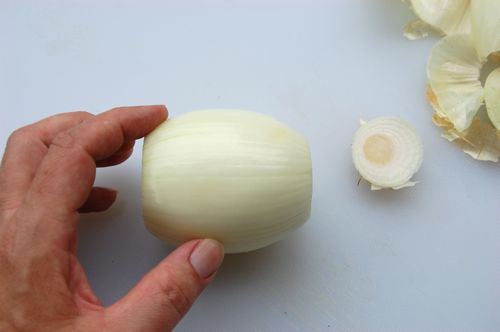
Then cut the onion in half along its length. Cut the halves into quarters, again along the onion’s length.
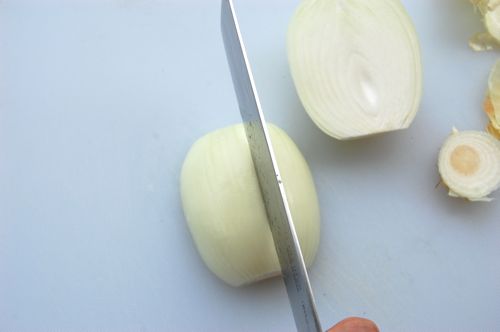
Now then, for the slicing. The idea is to sliver the onion by cutting it from the outside inward. So, using a nice sharp knife, angle the blade nearly parallel with your cutting board and slice toward the onion’s center.
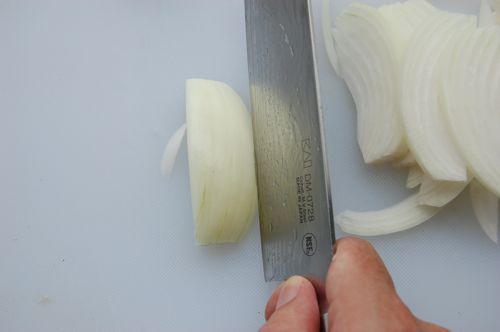
Keep angling the knife upward as you slice until you get to the top.
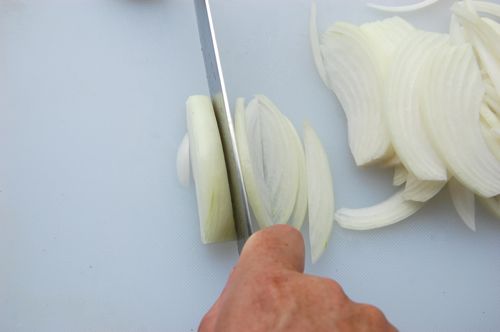
Do that for all your onion quarters and this is what you get, some very consistent not-too-big, not-too-small slivers. Can you cut the onions cross-wide into rings if you want? Sure. I won’t come straight to your house and ridicule you like some other bloggers will. That’s what makes me different.
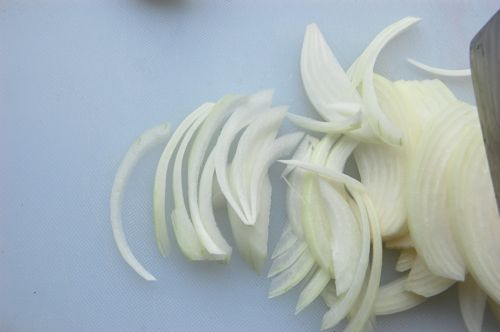
Now then. Apply about half a cup of olive oil to your widest sauté pan or a Dutch oven.
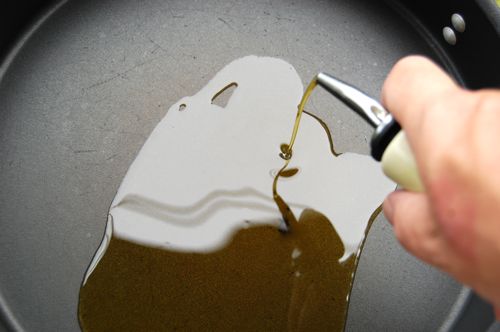
Heat it over medium-high heat until it runs easily across the pan and gives you that shimmery look:
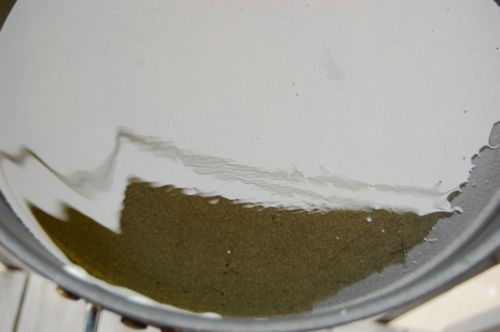
Now add the onions and toss until they’re all coated with oil.
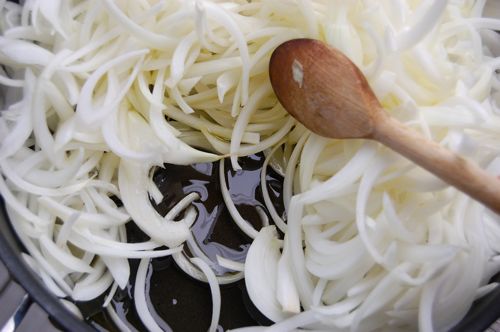
Reduce the heat to medium and cook, stirring every so often to make sure the onions aren’t burning. If the edges do start to brown, turn the heat down a little and stir more often. After half an hour they’ll look about like this.

Now add a cup of chicken stock and a teaspoon of white wine vinegar (the acid hastens the breakdown of the onion’s sugars)

Keep cooking another half an hour until the onions are a rich golden brown and the liquid has evaporated.
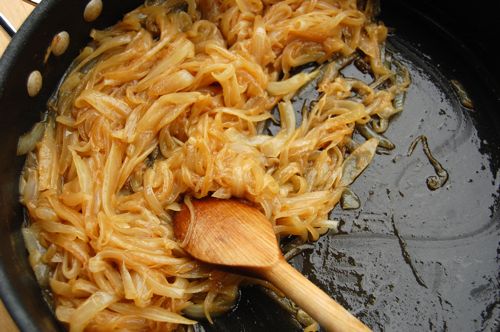
Inspired additions at this point include thyme leaves and/or a little anchovy paste, but do what you will. Cool and store in the refrigerator for up to ten days, assuming you can keep from eating them that long.
Also good to put under roasting chicken or turkey. Start them in the sautee pan until just softened, add in your broth or some white wine (a little salt maybe?), and then tuck them under the poultry to get their slow cooking hour or so while the chicken roasts. (Keep an eye on the liquid so they don’t dry out too much and scorch–add a little more wine/broth if needed to stay moist.) You get shmaltz onions in gravy, which is about the tastiest thing in the world.
If there’s any leftovers, use them in Joe’s amazing knish recipe, which incidentally made my Thanksgiving leftovers the best in the world again this year. Thank you Joe!
Oh my gosh does that sound amazing. I’m doing that this week as I’m planning a roast chicken for the family on Thursday. Wow, thanks Sialia!
And so glad to hear about the turkey leftover knishes. Great idea!
– Joe